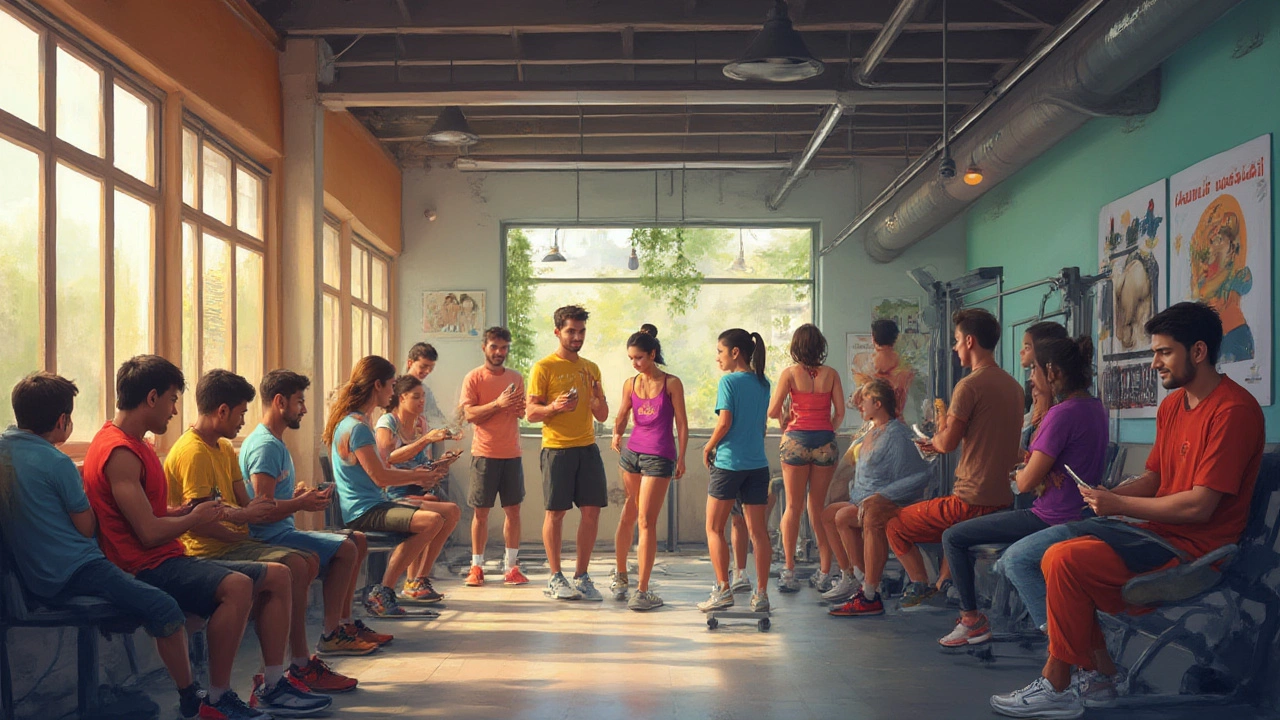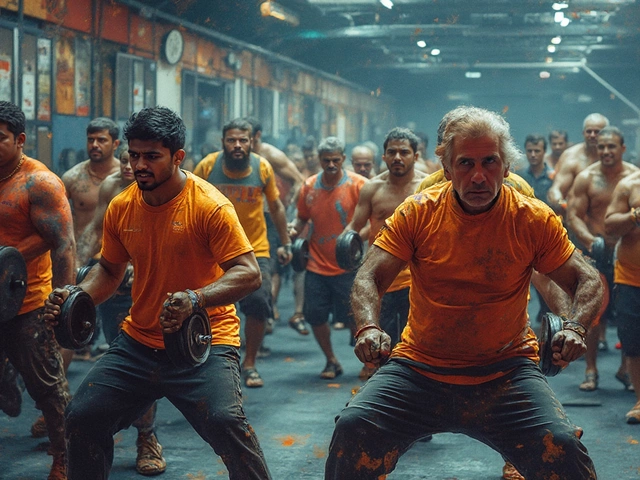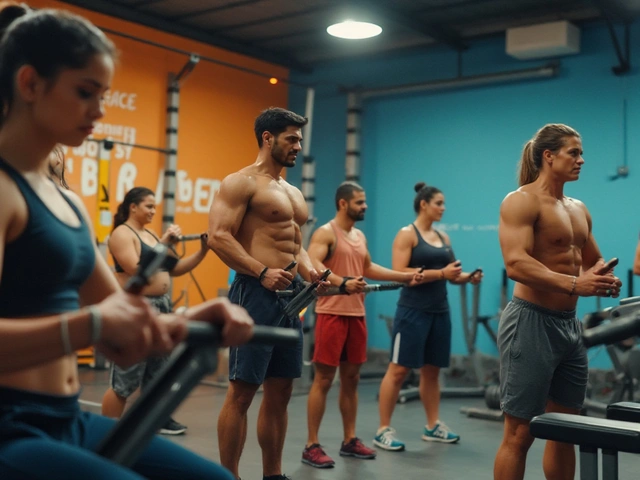Ever wondered why some people keep showing up at the gym, but nothing much actually changes? Let’s just get this out—winging your workouts rarely gets you anywhere amazing. If you keep bouncing between machines and Instagram routines, your progress is probably stuck. That’s where the idea of a dedicated gym split comes in. It’s not just for pro bodybuilders. It’s honestly the backbone of seeing real progress, whether you want to get stronger, lean out, or just actually see results from all the time you spend sweating.
What Exactly Is a Gym Split and Why Bother?
At its core, a gym split is just how you organize your weekly workouts by dividing muscle groups or movement patterns. Instead of training your full body every time, you break it down—maybe upper body one day, legs another, and so on. The magic? It gives muscles enough time to recover, so they actually grow and get stronger. For anyone who has tried doing intense full-body workouts five days in a row and ended up barely able to walk (yes, I’ve done that too), splits are a lifesaver.
Let’s talk science for a second. Research from the American College of Sports Medicine (ACSM) shows that muscle growth (hypertrophy) is best when you hit each muscle group 2-3 times per week. That gets tricky on a random schedule, but with a split, you can plan out exactly how often something gets trained—and rest it fully before next time. Plus, splitting your workouts means each session can be focused, so you don’t end up short-changing a muscle group just because you’re tired or bored.
Here’s one fun stat: Regular gym-goers who follow a structured split tend to stick with their program 33% longer, likely because they see more progress and don’t get as bored. If you like ticking off boxes (these people are my people), splits make it easy to track progress and set goals. No more guesswork—just a plan that actually works with your life and your body.
Popular Gym Split Types—and Which Ones Actually Work
Now let’s break down all those buzzwords you’ve probably heard. Push/pull/legs? Bro split? Upper/lower? They’re not random at all, though plenty of beginners get tangled in the names. I’m laying them out here fast and real:
- Full Body Split: Literally working your whole body each session (best for absolute beginners or when you can only get to the gym 2-3 times a week).
- Upper/Lower Split: You alternate upper body and lower body days. Effort is focused, and you get more volume where it counts. Great for people with 3-4 sessions a week.
- Push/Pull/Legs Split: Train push muscles (chest, shoulders, triceps) one day, pull muscles (back, biceps) the next, legs (quads, hamstrings, glutes, calves) on the third. Perfect for a 3-6 day schedule, depending on how advanced you are.
- Body-Part ("Bro") Split: A different muscle group gets its own day (like chest day, back day, leg day). Old school, but works if you want to really target each muscle direct. Not always the best for natural lifters though, since you hit each muscle only once a week.
Maybe you’ve heard the saying “there’s no best split” and rolled your eyes. But it’s actually pretty true—the best split fits with your life, goals, and recovery. If you’re swamped with work and can only train three times a week, don’t stress about not having a five-day program. Pick the split you’ll stick to (and not skip). Here’s a quick cheat-sheet:
| Frequency | Best Split | Muscle Recovery |
|---|---|---|
| 2 days | Full Body | High (lots of rest between sessions) |
| 3-4 days | Upper/Lower or Push/Pull/Legs | Balanced |
| 5-6 days | Push/Pull/Legs, Bro Split | Lower (watch your recovery!) |
People who train with splits generally notice actual gains within two months—sometimes less if their nutrition and sleep are on point. And honestly, there’s something satisfying about leg day soreness. If you’ve never hobbled up steps after squats, you’re not living.

How to Build Your Own Gym Split Step-by-Step
Let’s cut right to the chase. Setting up a split that actually works isn’t magic, but it takes more thinking than copying YouTube routines. Here’s a no-fuss guide you can follow. (Seriously, you don’t need a personal trainer for this.)
- Pick Your Training Days
How many days a week can you realistically hit the gym? Not just this week—think about your actual life. It’s way better to do three solid days regularly than flake on a five-day split. - Choose Your Split
Go back to the table above. Full body if you have two days, upper/lower for three or four, push/pull/legs for three to six. The best split is the one you don’t skip. - Select Your Exercises
Every session needs at least one “big” compound movement (think squats, bench press, rows, or deadlifts). After that, add a couple of accessory lifts (for me it’s hip thrusts, lateral raises—depend on your focus). If you’re in doubt, stay basic and master those before chasing fancy moves. - Set Sets and Reps
Start with 3-4 sets per exercise. For muscle growth, stick to 8-12 reps. Want strength? Go heavier with 4-6 reps. For endurance, 15+ reps with lighter weights. Don’t stress too much on the perfect number—consistency and good form matter much more. - Plan Rest and Recovery
Each muscle should get at least 48 hours to recover before you train it again hard. This is non-negotiable. Muscles don’t grow during workouts—they grow when you rest. - Track and Progress
If you never write down what you did, how will you know you’re getting better? Use an app, scrap paper—doesn’t matter. Just track your lifts and add weight, reps, or sets as you get stronger.
Need a real-life split example? Here’s a classic Push/Pull/Legs plan for someone training 6 days a week:
| Day | Workout | Main Exercises |
|---|---|---|
| Monday | Push | Bench Press, Overhead Press, Triceps Dips |
| Tuesday | Pull | Barbell Row, Pull-Ups, Biceps Curls |
| Wednesday | Legs | Squats, Romanian Deadlift, Calf Raises |
| Thursday | Push | Incline Dumbbell Press, Lateral Raises, Triceps Extensions |
| Friday | Pull | Lat Pulldowns, Face Pulls, Hammer Curls |
| Saturday | Legs | Leg Press, Walking Lunges, Seated Calf Raise |
| Sunday | Rest | Foam roll, walk Milo, nap |
What about cardio? Layer it on as needed but don’t let it eat into your recovery. I throw in two 20-minute treadmill or outdoor runs a week, usually after weights or on off-days—mainly so I’m not winded when running after Milo at the park.
Little Tips That Make a Huge Difference
Everyone wants the hacks, right? Here’s the gold:
- Don’t Skip Warmups
Take five minutes to get blood moving. Dynamic stretches beat static holds at the start. - Be Honest About Weaknesses
If you always skip legs or core, make them your priority at the top of your week. Facing those things first means less chance to flake when “life” happens. - Nutrition Is Half the Game
If your goal is muscle growth, you need calories and protein. General tip: aim for 1.6-2.2g protein/kg of body weight per day. Prepping meals ahead gives you fewer excuses. - Sleep Actually Matters
I used to push through on five hours but all the growth happens at night. The National Sleep Foundation says that people who get 7-9 hours see about 20% better muscle recovery. Crazy difference. - Listen to Your Body
Soreness is okay. Sharp pain isn’t. Be flexible if you need to sub an exercise or lower weight. Progress comes from consistency, not perfection. - Mix Things Up Every 6-8 Weeks
Muscles get bored too. Switch up your exercises, add drop sets, or up your intensity. But only after sticking to the plan long enough to see results in the first place. - Find a Routine You Actually Enjoy
If you hate your split, you’ll ghost the gym. Add music, podcasts, or friends. I sometimes bring a frozen Kong for Milo, so he gets workout time too (he loves agility drills in the gym car park). Make it your happy place. - Hydration Is Underrated
Muscles are 79% water. Even mild dehydration can drop your strength by up to 10%. Always keep a bottle handy.
Here’s a crazy fact from a 2023 European Journal of Sports Science report: The average gym-goer sticks to their training split for less than six weeks! The ones who check in for 12 weeks? They see triple the muscle gain. So pick your split, lock in, and see where you are in two or three months—not just next weekend. Everyone deserves real progress, especially if you’re putting in the hours. And hey, if all else fails, at least you can say your dog got a workout too.
Want the best results? Stick with one split, but stay flexible, listen to your body, and keep things fun. Let’s crush those goals—split by split, session by session.





